Wreck of the S.S. “Lintrose”.
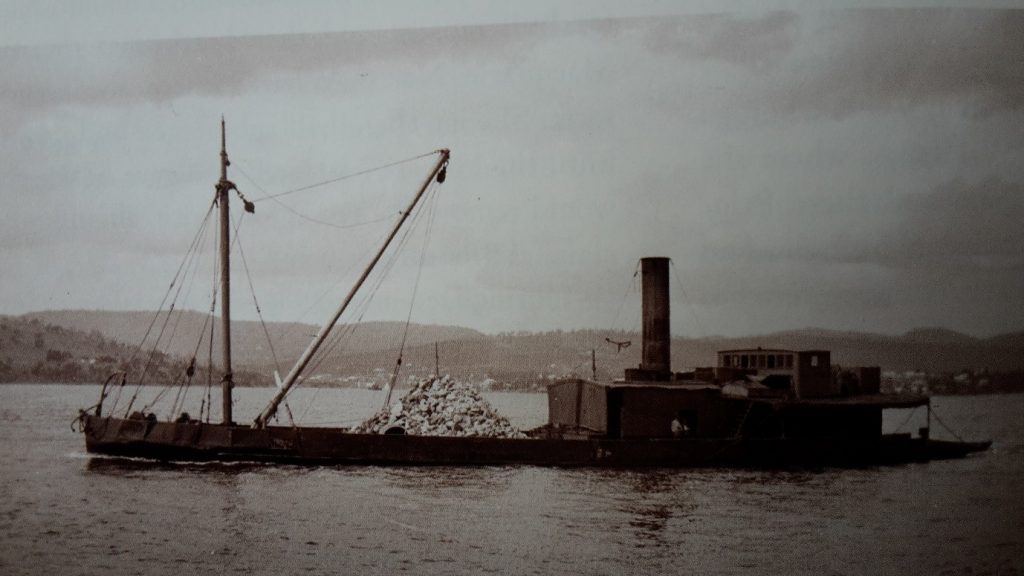
In an expanding British Empire totally dependant on the home country for industrial plant, UK shipyards were understandably flat out producing small vessels that could operate in underdeveloped areas.
The Fleming and Ferguson shipyard was founded in Paisley, Scotland in 1877, and initially specialised in making marine steam engines. In 1885 they expanded into shipbuilding by taking over the business and Phoenix Shipyard of H. McIntyre & Co. Fleming and Ferguson developed a World-class reputation for reciprocating engines and small ships such as dredgers, barges, tugboats, floating cranes and lighthouse tenders.
In the 1890s the company entered the specialist market for “knock down” vessels. These were bolted together at the shipyard, all the parts marked with numbers, disassembled and transported in kit form for final reassembly with rivets. This elaborate method of construction was used to small vessels for export.
Queensland Railways had a problem, a missing railway link between Gladstone and Rockhampton. They needed a shallow-draught river steamer to take freight and passengers the extra distance. A standard river paddle steamer was ordered in 1897. The dimensions were 38.5M x 7.92M x 1.79M. She was 148 tons and she drew about one metre of water. The steel plates were galvanised on the bottom and were 3/16ths of an inch thick.
In 1898 it built the stern wheel paddle steamer PS “Premier” and exported it in sections as deck cargo for reassembly at Maryborough, Queensland in Australia. On arrival, it was reassembled using rivets by Walkers Ltd, railway workshops at Maryborough, Queensland, and launched on 21 June 1898.
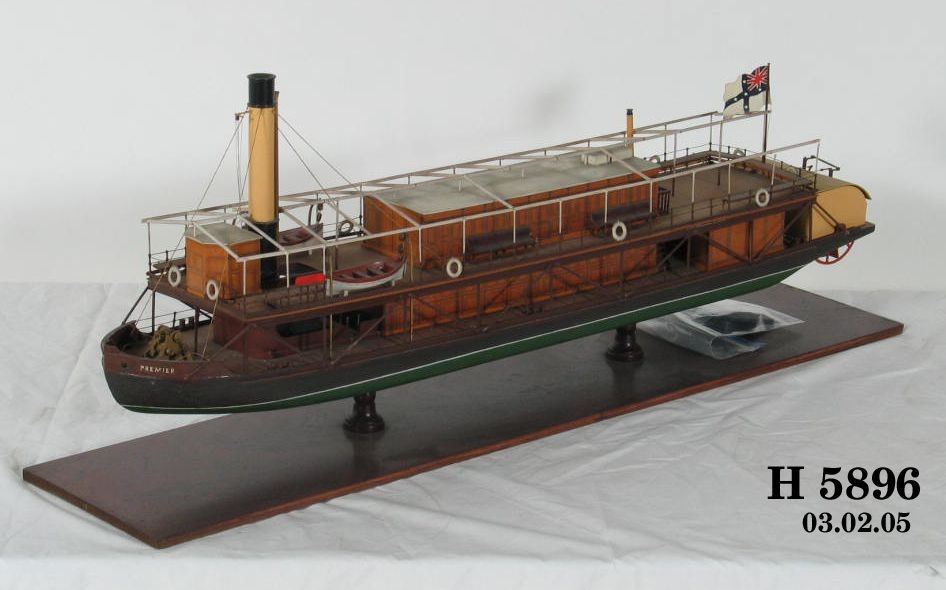
The steamer operated from Auckland Creek (Gladstone) via the “Narrows” between the mainland and Curtis Island on the high tide, to the port of Broadmount on the north side of the mouth of the Fitzroy River. From there the journey to Rockhampton was completed by train. The steamer trip took about 8 hours.
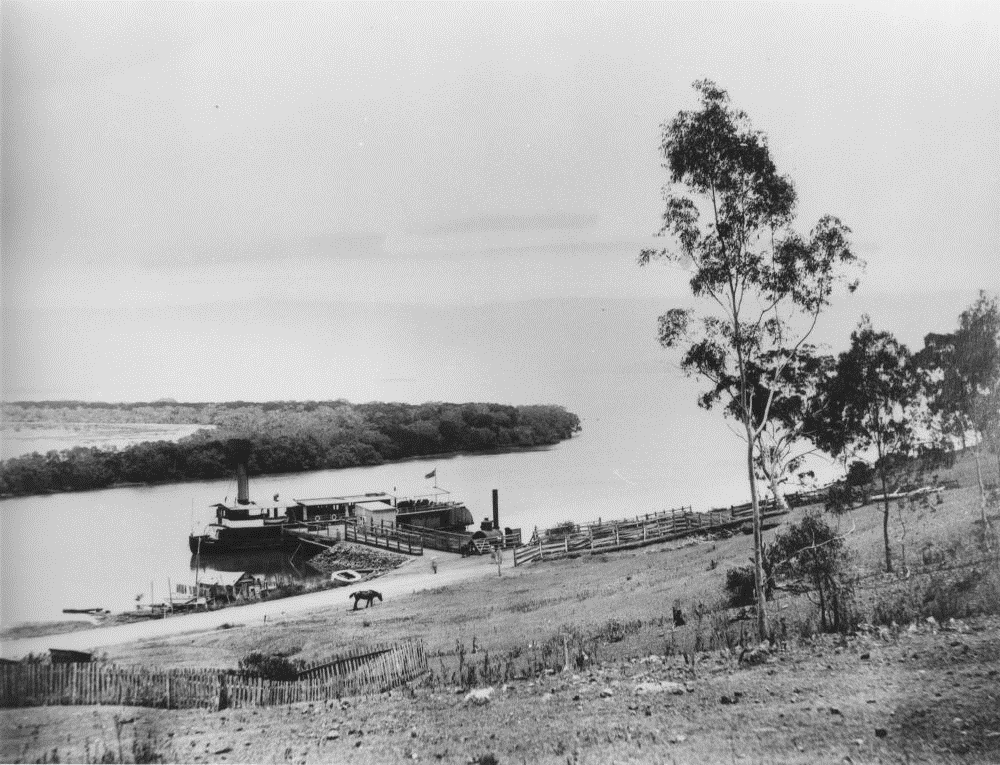
In 1902 she broke down. In 1903 the final 110-kilometre rail link from Gladstone to Rockhampton, the steamer service was no longer required.
In 1908, the “Premier” was then withdrawn and laid up and was sold to Carmichael Bros, of sawmillers, at West End on the Brisbane River. The steamer was renamed “Lintrose” and its large superstructure was removed. It was converted to a log carrier, a typical subtropical river “drogher”, with the wheelhouse and machinery moved aft.
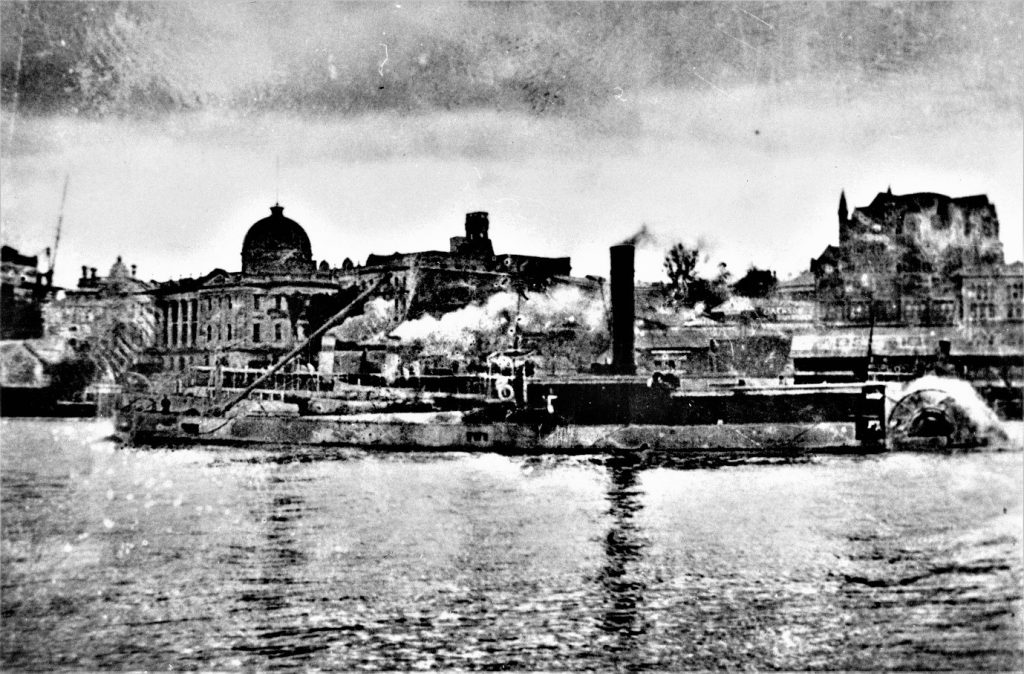
In 1911, she collided with the steam tug Chesterford in the Brisbane River.
In 1918 the Lintrose was sold to James Rowe and Sons Ltd of Hobart, for use on the Hobart river trade. It was towed to Tasmania. In Hobart in 1922 the rear paddle was removed and the configuration of the steamer changed to twin screws. She carted apples, water, limestone, anything that would pay.
On 10 March, 1932, while travelling from Norfolk Bay for Hobart with a cargo of telegraph poles, the Lintrose began to take water in heavy weather and was abandoned by its crew of four, who were rescued by the fishing boat Coquette. The Lintrose drifted on to Iron Pot Reef at the mouth of the Derwent River and was lost.
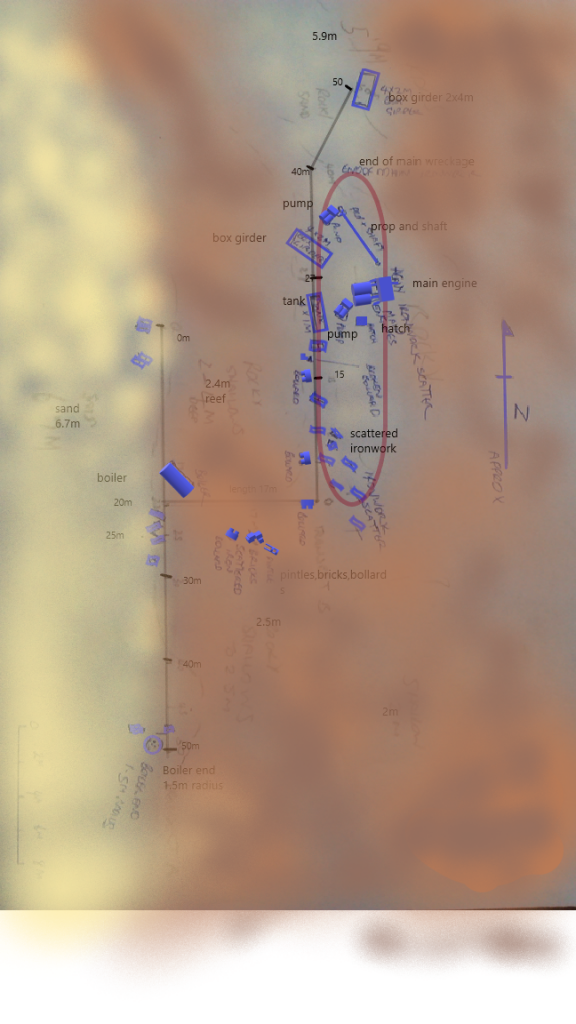
Iron Pot Reef – wreckage of Lintrose, outline shows the original position of the sunken hull in a gutter in the reef
Over several years, members of the Seadragons Dive Group have been visiting the wreck. She lies in shallow water on top of a sometimes rough Iron Pot Reef. Parts of the reef can be bare, but near the wreck the reef and wreckage attracts schools of pike, trumpeter and even the odd sea sweep. David Byrne and Mike Jacques Have been buzzed a couple of times by a huge smooth stingray. The wreck is a jumble of ironwork, covered in weed and difficult to recognise. At other times it is stripped clean by the swell and covered in blue mussels.
For something different members have measured out the wreckage and researched the history of this small and largely unknown old workhorse.
